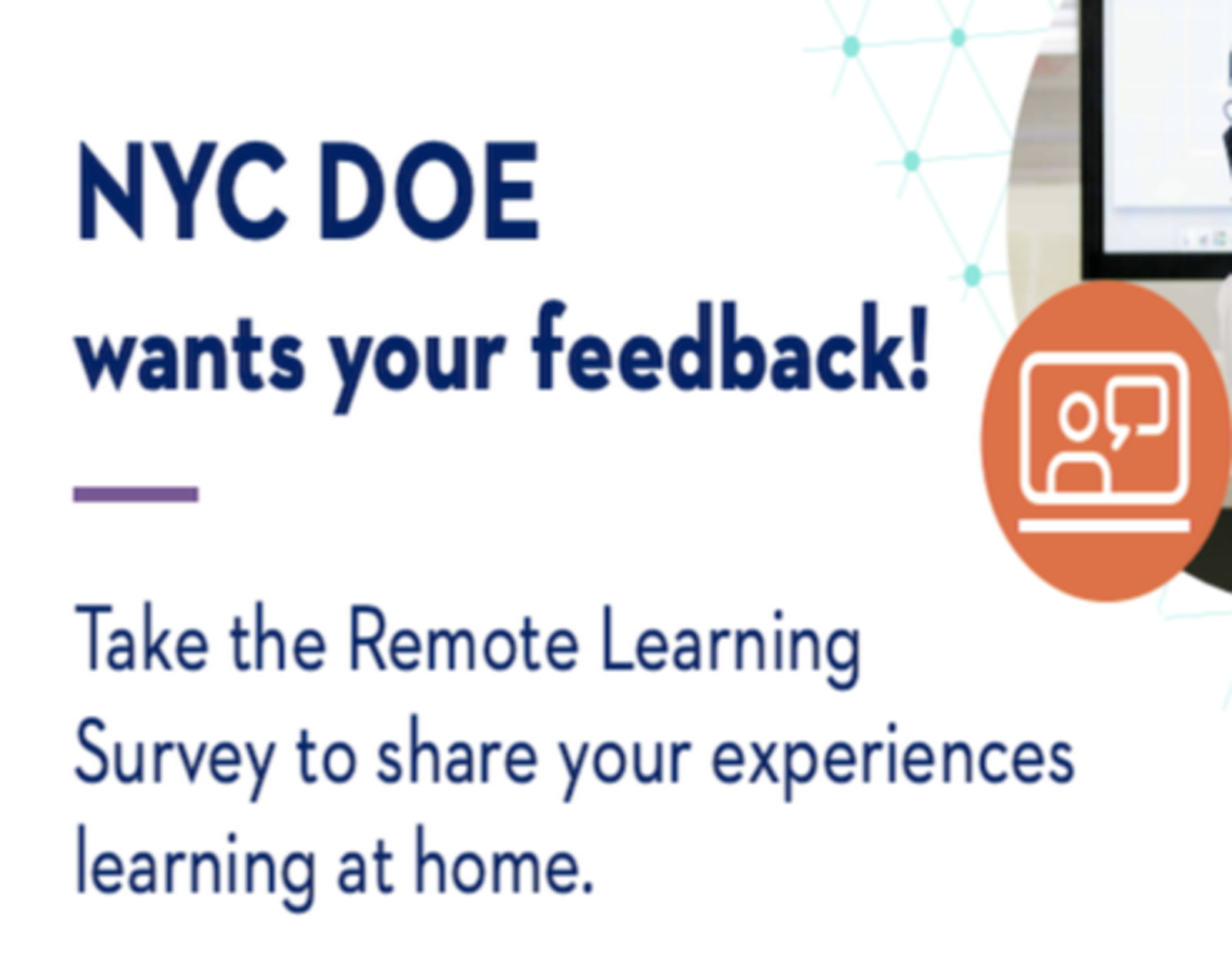What the DOE's Remote Learning Survey Will and Won't Answer

A month after students in the city started learning remotely, the DOE is checking in with families to see how it’s been going. They want all parents as well as students in grades 6-12 to take this short, anonymous survey by Friday, May 1st.
We encourage you all to do so. It will help the DOE get a better grasp on the basic logistics they should already know by now. For example: how many hours students are spending on assignments each day, how often teachers are interacting with students, and how many families still need access to devices and reliable internet.
But these questions only focused on basic issues. They don’t address the quality of the remote instruction that’s happening.
Better questions might yield better data. You can’t judge learning by asking “How much of your day do you spend learning or completing schoolwork” or “How many of your assignments each day do you usually complete?” We also can’t expect a student or parent to accurately compare learning now to learning in regular school (unless the answer is clearly and unfortunately “Learning much less”).
Instead, the survey should ask how students have been demonstrating what they’ve learned: Are they taking tests? Writing to show their thinking? Doing creative projects like making videos or screencasts about what they’ve learned? Engaging in conversations with the teacher or other students? Are these assignments and experiences challenging students enough and stimulating new ideas?
The closest the survey gets to deeper questions about the quality of learning is when it asks students, but not the parents, which type of remote experiences they’ve engaged in and which have been most helpful. However, the options they give range from entirely passive--like “received a message (e.g. text, email, etc.) about an assignment”--to “joined a video call for one-on-one instruction with your teacher(s).” None speak to the level of engagement, creative thinking, or active demonstration of new learning facilitated by any of these experiences.
We recognize the unprecedented challenge that the DOE, its schools, and its teachers are facing right now. But avoiding harder questions about the quality of instruction on this survey is a missed opportunity to learn which schools and teachers are rising to that challenge--and which ones need more support.
What would you want to tell the DOE about the quality of remote learning so far? Tell us in the COMMENTS below.
Please Post Comments